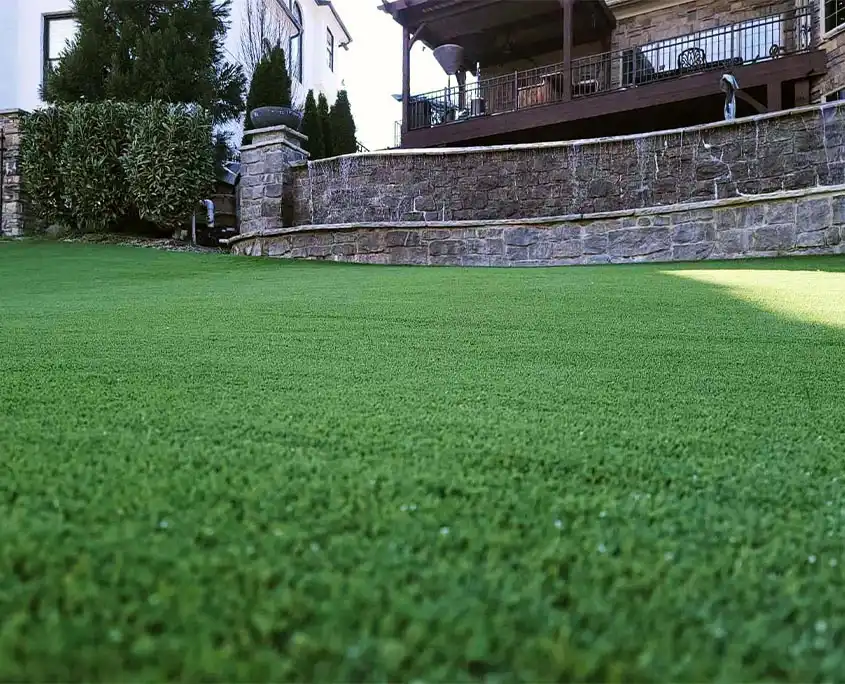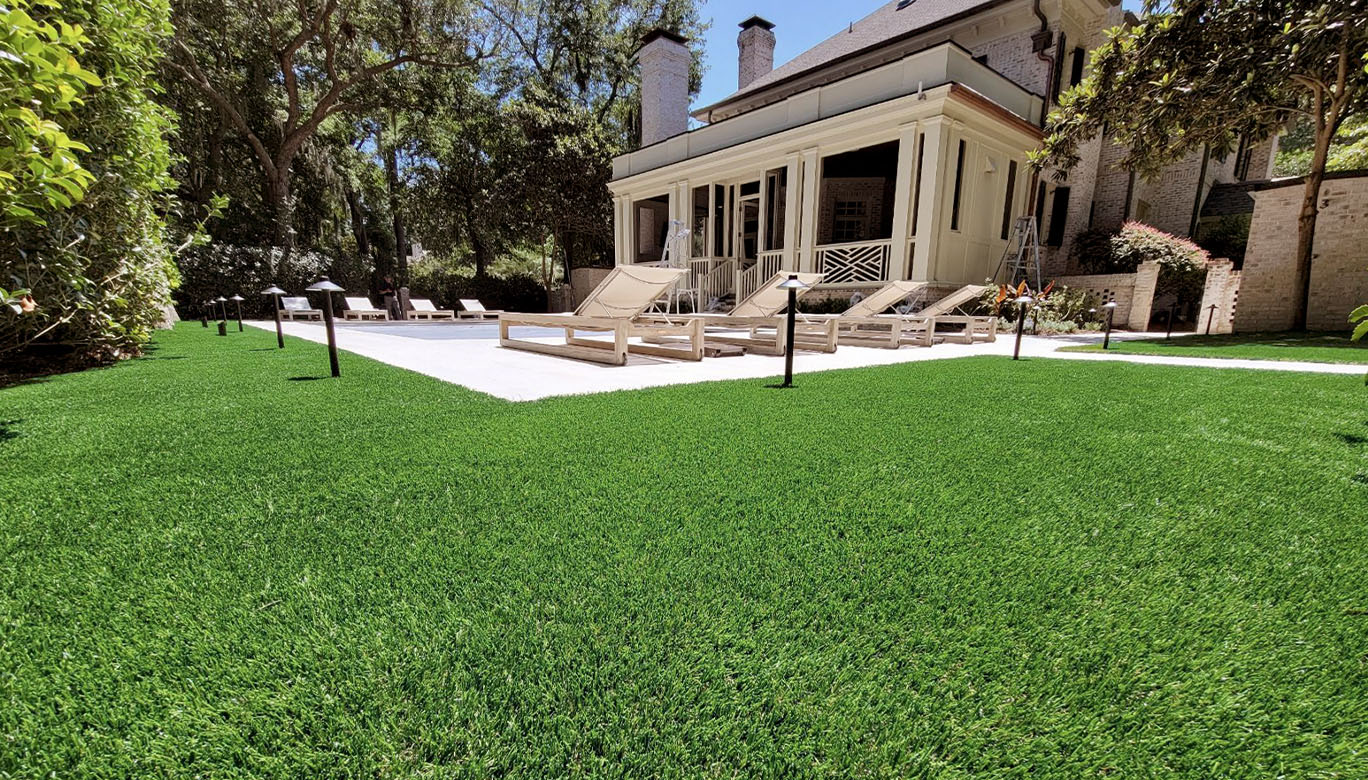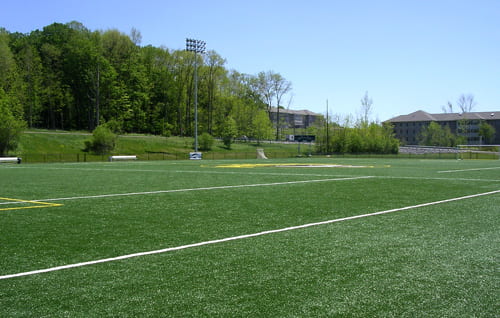Top Phoenix Turf Companies Delivering Premium Synthetic Lawn Products
Top Phoenix Turf Companies Delivering Premium Synthetic Lawn Products
Blog Article
Delve Into the Environmental Advantages of Opting for Synthetic Grass Solutions
The fostering of fabricated grass remedies provides an engaging opportunity to attend to pressing ecological obstacles. By considerably reducing water usage and reducing the application of hazardous chemicals, these alternatives not just advertise lasting landscape design yet also protect regional ecological communities. Furthermore, the reduced carbon footprint connected with decreased maintenance activities adds to an extra sustainable method to land monitoring. The implications of these advantages expand beyond simple preservation efforts, raising concerns concerning their lasting influence on environment preservation and general ecological equilibrium. Discovering these dimensions reveals a complicated interaction worth taking into consideration.
Water Preservation Conveniences
One of the most substantial advantages of artificial grass is its capacity to conserve water. In comparison, fabricated grass does not require watering, significantly reducing the general demand for water sources.
By getting rid of the need for regular watering, synthetic grass adds to sustainable landscape practices and helps mitigate the environmental influence of excessive water usage. In addition, the preservation of water expands to the decrease of overflow, which can cause dirt erosion and river air pollution.
In addition, the installation of synthetic grass allows homeowners and towns to allocate water resources more effectively, concentrating on essential usages such as drinking water and agriculture. The shift towards man-made lawn not only promotes accountable water usage however additionally straightens with more comprehensive ecological objectives aimed at preserving natural deposits.
As areas increasingly focus on sustainability, the water preservation advantages of synthetic grass offer an engaging situation for its fostering in household and business landscape design projects.
Lowered Chemical Use
The shift to synthetic lawn considerably reduces the dependence on chemical therapies commonly made use of in natural grass upkeep. Standard lawn administration commonly entails the application of chemicals, plant foods, and herbicides to promote development and control bugs. These chemicals can pose dangers to human health, neighborhood wildlife, and the setting, adding to dirt and water contamination.
In contrast, man-made lawn eliminates the demand for these unsafe substances. By decreasing the release of synthetic substances into the community, synthetic lawn promotes much healthier dirt and water systems.
Additionally, the absence of chemical runoff connected with synthetic grass installations assists safeguard neighborhood rivers from contamination, supporting water life and preserving biodiversity. Arizona artificial turf. As communities significantly prioritize sustainable practices, selecting synthetic grass provides a feasible remedy that straightens with ecological conservation goals. With this shift, residential property proprietors can appreciate lush environment-friendly areas without compromising eco-friendly wellness, leading the way for a more sustainable future
Reduced Carbon Footprint

Moreover, the installation of synthetic grass can result in considerable water preservation. All-natural lawns need substantial quantities of water for irrigation, which not only includes in the carbon impact associated with water removal and therapy however additionally stress neighborhood water resources. In contrast, synthetic grass needs minimal maintenance, calling for no watering, consequently significantly reducing water use and its linked power prices.
In addition, the longevity of synthetic grass adds to its lower carbon influence. With a life expectancy of up to 15 years or more, the demand for frequent replacements is reduced, causing less waste and lower energy usage in manufacturing and taking care of typical yard options. On the whole, artificial grass presents a lasting option for ecologically conscious landscape design.
Environment Preservation
Habitat conservation is a vital consideration in the argument over landscape design choices, specifically when contrasting man-made turf to all-natural yard. Natural yard yards visit here frequently require extensive upkeep, including using chemicals, herbicides, and plant foods, which can adversely affect neighborhood communities. These chemicals can seep right into the soil and waterways, harming indigenous plants and animals and disrupting regional environments.
Fabricated turf eliminates the demand for unsafe chemicals, thereby securing nearby wild animals and maintaining the stability of surrounding communities. The installation of man-made lawn can lead to the conversion of previous lawn locations into even more biodiverse landscapes, such as pollinator yards or indigenous plant areas, which can sustain neighborhood wild animals.
Inevitably, the transition to synthetic grass not just conserves water and lowers upkeep initiatives but likewise promotes a more harmonious partnership in between human activities and the natural surroundings, advertising habitat conservation at the same time.
Long-Term Sustainability
Long-term sustainability is a crucial consider examining the benefits of fabricated grass over conventional grass lawns. Among the most substantial advantages of artificial grass is its longevity; it can last approximately 15-20 years with very little upkeep, whereas natural lawn needs constant reseeding and replacement. This longevity decreases the requirement for consistent resources, such as water, fertilizers, and chemicals, which are vital for preserving a healthy and balanced yard lawn.
In addition, synthetic grass adds to a reduction in carbon emissions connected with lawn care devices. Conventional yards frequently call for gas-powered mowers, leaners, and blowers, all of which add to air pollution. Phoenix turf companies. On the other hand, fabricated grass removes the need for such equipment, advertising a cleaner atmosphere
Additionally, the manufacturing of artificial lawn significantly browse around these guys makes use of recycled materials, improving its sustainability account. As suppliers take on green techniques, the ecological footprint of fabricated grass remains to reduce.

Final Thought
The adoption of artificial lawn options provides considerable ecological advantages, consisting of significant water preservation, reduced reliance on harmful chemicals, and a reduced carbon footprint. Synthetic lawn aids in maintaining natural environments by minimizing land check it out disruption and advertising long-term sustainability through the usage of sturdy materials. Collectively, these variables emphasize the possibility of synthetic grass to contribute positively to environmental health and provide a viable option to traditional landscape design techniques in a progressively resource-conscious world.
In contrast, artificial grass does not require watering, dramatically reducing the total demand for water sources. By minimizing the release of artificial compounds right into the ecological community, synthetic lawn promotes healthier soil and water systems.
In addition, the installment of man-made lawn can result in substantial water preservation. In contrast, fabricated turf requires minimal upkeep, calling for no watering, thereby considerably minimizing water use and its associated power costs.

Report this page